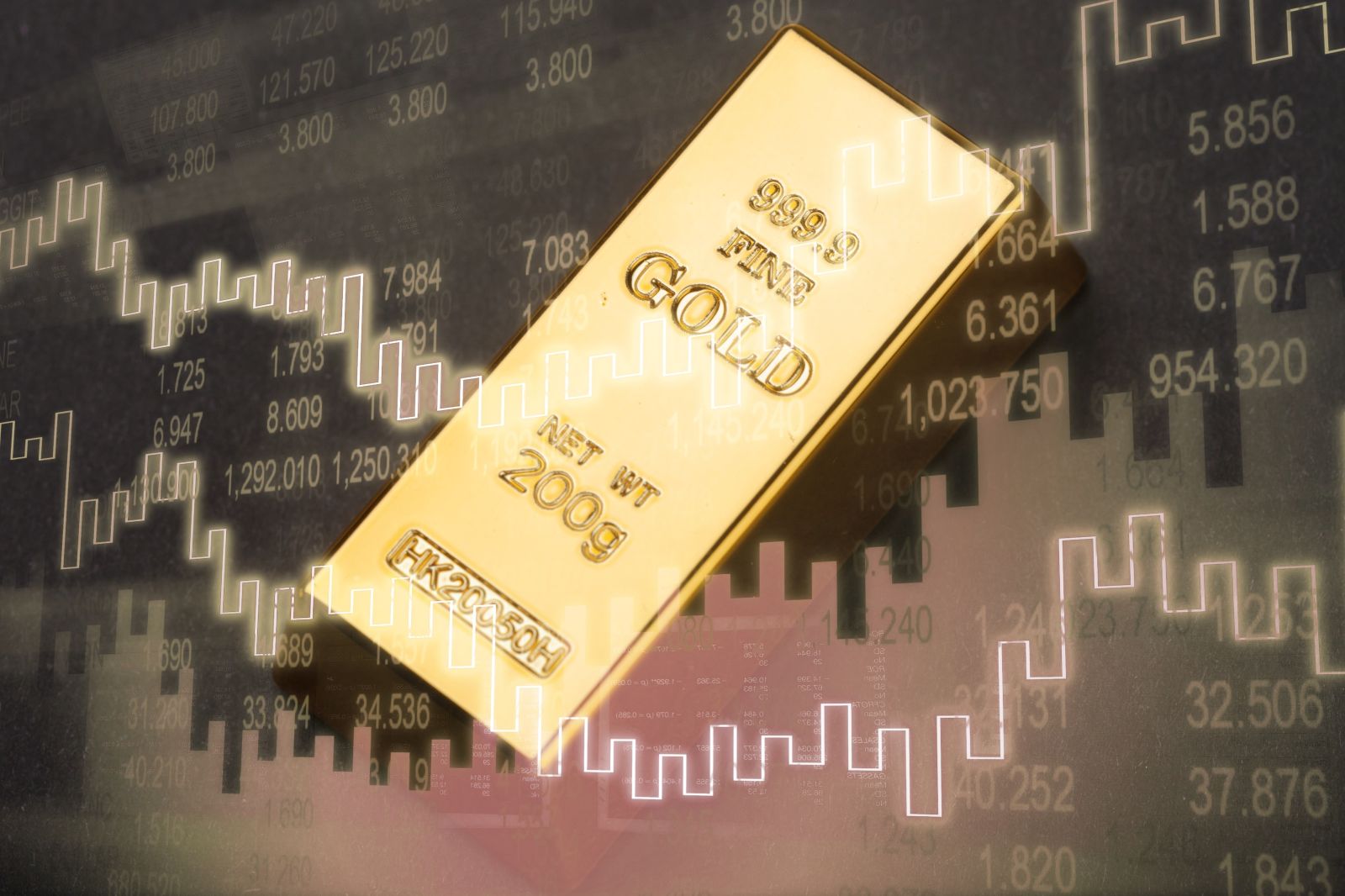
In the current economic and geopolitical climate, gold prices achieving the $3,000 level within the next year is “not crazy,” according to John Hathaway, Senior Portfolio Manager of Sprott Asset Management, who also explained in a recent interview the profound impact that a 15-20% increase in the precious metal’s price would have on mining stocks.
Hathaway pointed out that mining stocks are trailing behind in an equity market that is highly concentrated in a few tech stocks. Investors are “positioned in a very few stocks that explain the movement of the S&P, and it’s a very crowded trade,” Hathaway said. “I think if that crowded trade starts to unwind, people will look around and say ‘Well, what else is there?’ And they will discover the opportunities in precious metals mining stocks.”
“There’s a huge mean reversion trade ahead of us, assuming gold prices stay at these levels,” Hathaway continued. “And then I could make an argument for why they could move even higher, if and when people lose their degree of comfort and complacency with how they’re currently positioned. I think that lies ahead, and that's why I would say we are at the cusp of a big move in mining stocks even if the gold price stays where it is.”
Sprott's $3,000 price target for gold echoes forecasts from analysts at Citi, BofA, and more research firms. For investors looking to leverage the potential rise of gold to $3,000 and its expected impact on mining stocks, here are three ways to invest.
Why Does Gold Matter?
Gold is a distinctive asset, blending aspects of both commodity and currency. It is shiny, metallic, and easily melts into bars, coins, or jewelry. Unlike other metals, it doesn't rust, corrode, or decay. Gold’s role as a medium of exchange dates back thousands of years.
Unlike any other commodity, gold has captivated human societies since the dawn of recorded history. Empires and kingdoms have risen and fallen over gold and mercantilism. As civilizations advanced, gold became universally accepted as a reliable form of payment.
In essence, history has endowed gold with a power unmatched by any other commodity, a power that persists to this day. Central banks globally continue to hold gold bullion as a key component of their foreign currency reserves, affirming gold’s enduring role in the global financial system.
Gold serves multiple purposes beyond its role as a valuable asset in both industrial and decorative applications. Jewelry alone constitutes a substantial portion of yearly mining outputs. Additionally, gold plays critical roles in electronics, computer technology, medical equipment, and dental applications, among others.
From a fundamental standpoint, gold is typically considered a reliable hedge against inflation, serving as an effective store of value amid a declining currency.
Gold Futures Hit 6-Week Highs After U.S. Jobs Data
Gold and silver futures (SIU24) on Friday reached their highest settlements since May following the June jobs report, which showed an increase in the unemployment rate to 4.1%. This pressured the dollar ($DXY) and bolstered expectations for an interest-rate cut by the Federal Reserve. Notably, gold is a commodity that's sensitive to interest rates, and tends to rise when rates decline.
There were additional signs of a cooling job market in Friday's report; average hourly earnings increased by 3.9% from a year earlier, marking the smallest gain since 2021, and although the job count rose by a solid 206K in June, it was revised lower for April and May by a combined 111K jobs.
In this context, prices for precious metals gained support, with August-dated gold futures (GCQ24) settling at $2,397.70 per ounce, up $28.30, or 1.2%, for the session.
The gold market surged significantly earlier this year, reaching its peak in April 2024 and undergoing a retest in May 2024, followed by a decline into a trading range. It appears that this consolidation phase has established a seasonal bottom, setting the market up for a robust rally to follow.
Investors have several avenues to invest in gold, such as purchasing bullion (like gold bars), exchange-traded funds (ETFs), mutual funds, futures, mining companies, and jewelry.
One of the most popular ways to invest in gold is through buying an exchange-traded fund. There are two options here: to buy gold ETFs that hold physical gold, either directly or through derivatives contracts, or to buy gold mining ETFs that hold portfolios of companies’ stocks involved in extracting and refining the metal. The benefit of holding mining stocks over gold is that gains can be magnified during a true gold bull market, as a substantial rise in gold prices significantly boosts the margins of gold mining companies.
With Hathaway pointing to a prime buying opportunity for gold mining stocks, here are three mining-focused ETFs to consider.
1. VanEck Gold Miners ETF
Launched in 2006, the VanEck Gold Miners ETF (GDX) seeks to replicate as closely as possible, before fees and expenses, the price and yield performance of the NYSE Arca Gold Miners Index. This index is weighted by market capitalization and comprises gold and silver mining companies, including so-called royalty companies.
While royalty companies like Franco-Nevada (FNV) or Wheaton Precious Metals (WPM) have robust business models, they do not engage directly in mining operations. Instead, they provide funding to mining companies in exchange for royalties or streaming agreements, where they either receive a percentage of revenue or purchase metals at a predetermined price, typically below current market rates.
GDX's total assets under management (AUM) are currently at $13.91 billion. At the same time, the fund has a relatively high annual expense ratio of 0.51%.
Shares of GDX are up about 17% on a year-to-date basis. The fund also offers a dividend yield of 1.38%. GDX's annual payouts have ranged between $0.48 and $0.53 per share since 2021.
GDX stands out as one of the more liquid ETFs available, with a 30-day average daily trading volume exceeding 20 million shares, and it maintains a narrow 30-day median bid/ask spread of just 3 basis points, according to VanEck. GDX is also optionable, providing opportunities for investors interested in hedging or speculating.
The ETF invests in 54 companies and is relatively concentrated, with the top 10 accounting for 64.15% of the fund. GDX’s top holdings consist of Newmont Corp (NEM) at 13.86%, Agnico Eagle Mines (AEM) at 9.38%, Barrick Gold (GOLD) at 8.40%, Wheaton Precious Metals at 6.83%, and Franco-Nevada at 6.52%.
2. Vaneck Junior Gold Miners ETF
Established in 2009, the VanEck Junior Gold Miners ETF (GDXJ) tracks the performance of the Global Junior Gold Miners Index, comprising small-cap firms primarily focused on gold and silver mining, with at least 50% of their revenue derived from these metals.
Rebalanced every quarter, this ETF limits individual stock exposure to 8%, while ensuring that silver stocks collectively do not exceed 20% of the portfolio. With $5.18 billion in assets under management, the GDXJ ETF has an expense ratio of 0.52%, which is relatively high. However, it offers a dividend yield of 0.61%, effectively offsetting the annual fee for investors who hold it.
Shares of GDXJ have gained nearly 19% on a year-to-date basis.
With a 30-day average daily trading volume of 4.75 million shares and a 30-day median bid/ask spread of only 2 basis points, GDXJ is extremely liquid. The GDXJ fund is also optionable.
The fund holds 88 stocks, and the top 10 constitute 42.65% of the ETF. The top 5 holdings are Kinross Gold (KGC) at 7.51%, Alamos Gold (AGI) at 6.35%, Pan American Silver (PAAS) at 5.99%, Harmony Gold Mining (HMY) at 5.95%, and Compania de Minas Buenaventura (BVN) at 4.71%.
3. iShares MSCI Global Gold Miners ETF
The iShares MSCI Global Gold Miners ETF (RING) is a passively managed ETF aiming to mirror the MSCI ACWI Select Gold Miners Investable Market Index. This index targets companies within the gold mining sector known for their strong correlation with gold prices.
With $508.9 million in assets under management and an expense ratio of 0.39%, RING is the cheapest ETF on this list. The fund pays shareholders $0.19 in dividends semi-annually for a forward yield of 1.26%.
Shares of RING have climbed 19.8% on a year-to-date basis.
The RING ETF, however, offers lower liquidity, as reflected in its significantly smaller assets under management compared to the previous two ETFs, with an average daily volume of 107,525 shares over the last 20 trading days. Also, its relatively high 30-day median bid/ask spread of 0.27% somewhat outweighs the benefit of its lower expense ratio, though this factor is not a deal-breaker for long-term investors. The RING fund is optionable as well.
The RING ETF exhibits significant concentration in its holdings, with the top 3 holdings comprising over 45% of the ETF, and the top 10 holdings accounting for 73.34% of its assets. Among its holdings, you will find industry leaders such as Newmont, Agnico Eagle Mines, and Barrick Gold.
On the date of publication, Oleksandr Pylypenko did not have (either directly or indirectly) positions in any of the securities mentioned in this article. All information and data in this article is solely for informational purposes. For more information please view the Barchart Disclosure Policy here.






